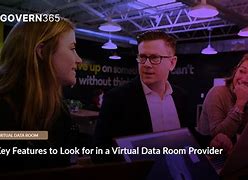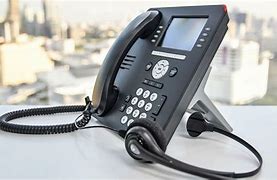
Daftar isi: [Hide]
- 1The ABCs of Virtual Data Rooms: Everything You Need to Know
- 1.1What is a Virtual Data Room?
- 1.2What is a Virtual Data Room, and What is it Used For?
- 1.3How Does a Virtual Data Room Work?
- 1.4What are the benefits of Using a Virtual Data Room?
- 1.5What are the Disbenefits of Using a Virtual Data Room?
- 1.6Virtual Data Rooms and Due Diligence
- 1.7Why Are Virtual Data Rooms Used in Due Diligence?
- 1.8What are the Key attributes of a Virtual Data Room for Due Diligence?
- 1.9What are the benefits of Using a Virtual Data Room for Due Diligence?
- 1.10Virtual Data Rooms and Mergers and Acquisitions (M&A)
- 1.11How are Virtual Data Rooms Used in M&A Transactions?
- 1.12What are the Key benefits of Using a Virtual Data Room in M&A?
- 1.13What are the optimal Practices for Using a Virtual Data Room in M&A?
- 1.14Choosing the Right Virtual Data Room offerr
- 1.15What Factors Should You Consider When Choosing a Virtual Data Room offerr?
- 1.16How Can You Compare varied Virtual Data Room offerrs?
- 1.17What are Some of the Top Virtual Data Room offerrs?
- 1.18Setting Up and Using a Virtual Data Room
- 1.19How to Set Up a Virtual Data Room?
- 1.20How to Organize Data in a Virtual Data Room?
- 1.21How to Manage User Access and Permissions?
- 1.22Security and Compliance in Virtual Data Rooms
- 1.23What are the Security attributes of a Virtual Data Room?
- 1.24How to Ensure Compliance with Regulations?
- 1.25What are the optimal Practices for Data Security in a Virtual Data Room?
- 1.26Conclusion: The Future of Virtual Data Rooms
- 1.27The Future of Virtual Data Rooms: What to Expect?
- 1.28How Virtual Data Rooms are Changing the Way Businesses Do Deals?
- 1.29What are the Emerging Trends in Virtual Data Room Technology?

Virtual data rooms (VDRs) have become an indispensable tool for businesses involved in mergers and acquisitions (M&A), due diligence, and other sensitive transactions. These secure online platforms offer a centralized location to store, share, and manage confidential documents, streamlining communication and collaboration between parties involved. This article will provide you with a comprehensive overview of virtual data rooms, covering their core functionalities, benefits, and considerations for selecting the right platform for your specific needs.
Whether you are a seasoned M&A professional or a business owner venturing into the world of sensitive document management, understanding VDRs is crucial. This guide will break down the essential aspects of these platforms in simple terms, allowing you to grasp their significance and unlock their full potential. From choosing the appropriate features to ensuring seamless integration into your existing workflows, we’ll navigate the intricacies of VDRs with clear explanations and practical insights.
Prepare to delve into the world of secure online document collaboration and discover how VDRs can transform your transaction processes, empowering you with increased efficiency, improved communication, and ultimate control over your sensitive information. Get ready to learn everything you need to know about virtual data rooms, and start your journey toward seamless, secure, and successful transactions.
The ABCs of Virtual Data Rooms: Everything You Need to Know
In today’s digital world, businesses are constantly seeking ways to streamline their operations and enhance efficiency. One such innovation that has revolutionized the way companies handle sensitive information and collaborate on complex projects is the virtual data room (VDR).
What is a Virtual Data Room?
A virtual data room is a secure, cloud-based platform that allows businesses to share and manage large volumes of confidential documents with authorized individuals. It acts as a central repository for all essential data, facilitating collaboration, communication, and secure information sharing during critical business processes, such as due diligence, mergers and acquisitions (M&A), and fundraising.
What is a Virtual Data Room, and What is it Used For?
Essentially, a VDR is a digital space that replicates the traditional physical data room. However, it offers a multitude of benefits over its physical counterpart. VDRs offer a secure, controlled environment where sensitive data can be accessed and managed by authorized personnel, eliminating the need for physical storage, transportation, and handling.
How Does a Virtual Data Room Work?
VDRs operate by providing a secure platform where users can upload, organize, and share documents with controlled access and permissions. The system leverages advanced security attributes, including encryption, two-factor authentication, and audit trails, to ensure data integrity and prevent unauthorized access.
What are the benefits of Using a Virtual Data Room?
VDRs offer a wide scope of benefits for businesses, including:
- Enhanced Security: VDRs offer a secure environment for storing and managing sensitive data. Advanced attributes like encryption, access controls, and audit trails help protect information from unauthorized access and data breaches.
- boostd Efficiency: VDRs streamline document sharing and collaboration, allowing teams to work together more effectively and efficiently.
- Improved Collaboration: VDRs facilitate seamless communication and collaboration among internal and external stakeholders, enhancing transparency and fostering trust.
- Reduced Costs: VDRs eliminate the need for physical data rooms, reducing the associated costs of printing, storage, and transportation.
- Global Accessibility: VDRs offer 24/7 access to data from anywhere in the world, enabling seamless collaboration across geographical boundaries.
- Improved Auditability: VDRs offer a complete audit trail of all activities, enabling organizations to track every access and modification to data.
What are the Disbenefits of Using a Virtual Data Room?
While VDRs offer numerous benefits, there are also some potential disbenefits to consider:
- Cost: Implementing a VDR can be expensive, especially for small businesses with limited budgets.
- Complexity: VDRs can be complex to set up and manage, requiring technical expertise and time investment.
- Learning Curve: Users may need to familiarize themselves with the VDR platform and its attributes, which can take time and effort.
- Internet Dependence: VDRs rely on internet connectivity, which can be a challenge in areas with limited or unreliable internet access.
- Security Concerns: Although VDRs offer advanced security attributes, there is always a risk of data breaches, especially if security protocols are not properly implemented.
Virtual Data Rooms and Due Diligence
Due diligence is a critical process that involves the examination of a company’s financial records, operations, and legal compliance. It is often conducted during mergers and acquisitions (M&A) transactions, investment rounds, and other significant business transactions.
Why Are Virtual Data Rooms Used in Due Diligence?
VDRs are widely used in due diligence because they offer a secure, efficient, and organized way to share and manage sensitive information. They enable due diligence teams to access and review documents securely, facilitating a thorough and accurate assessment of the target company.
What are the Key attributes of a Virtual Data Room for Due Diligence?
- Secure File Storage: VDRs offer a secure platform for storing and managing confidential documents, ensuring that sensitive information remains protected.
- Document Control and Management: VDRs enable users to organize, search, and track documents efficiently, ensuring that due diligence teams have access to the required information.
- Access Control and Permissions: VDRs allow users to set granular access controls, ensuring that only authorized personnel can access specific documents or folders.
- Audit Trails and Reporting: VDRs offer a detailed audit trail of all activities, enabling organizations to track who accessed which documents and when.
- Watermarking and Redaction: VDRs allow users to watermark documents and redact sensitive information, protecting against unauthorized disclosure.
- Q&A functionality: VDRs offer a Q&A attribute, allowing due diligence teams to ask querys and receive answers directly within the platform, streamlining communication and ensuring transparency.
What are the benefits of Using a Virtual Data Room for Due Diligence?
- Accelerated Due Diligence: VDRs streamline the due diligence process, allowing teams to access and review documents efficiently, leading to faster completion times.
- Enhanced Security: VDRs offer a secure environment for managing confidential information, reducing the risk of data breaches and unauthorized access.
- Improved Collaboration: VDRs facilitate seamless communication and collaboration among due diligence teams, enabling them to work together effectively and efficiently.
- Reduced Costs: VDRs eliminate the need for physical data rooms, reducing the associated costs of printing, storage, and transportation.
- Enhanced Transparency: VDRs offer a complete audit trail of all activities, ensuring transparency and accountability throughout the due diligence process.
Virtual Data Rooms and Mergers and Acquisitions (M&A)
Mergers and acquisitions (M&A) transactions are complex and require careful planning and execution. VDRs play a vital function in M&A deals by streamlining the process, enhancing security, and facilitating collaboration.
How are Virtual Data Rooms Used in M&A Transactions?
- Due Diligence: VDRs are used to share and manage documents during the due diligence process, allowing potential buyers to review the target company’s financial statements, operations, and legal compliance.
- Negotiation: VDRs can be used to share and track documents during negotiations, facilitating a seamless and secure exchange of information.
- Closing: VDRs offer a secure platform for storing and managing all closing documents, ensuring that all parties have access to the necessary information.
What are the Key benefits of Using a Virtual Data Room in M&A?
- Accelerated Transactions: VDRs streamline M&A transactions, enabling faster due diligence and negotiation processes, leading to quicker completion times.
- Enhanced Security: VDRs offer a secure environment for managing confidential information, reducing the risk of data breaches and unauthorized access.
- Improved Collaboration: VDRs facilitate seamless communication and collaboration among all parties involved in the M&A transaction, fostering trust and transparency.
- Reduced Costs: VDRs eliminate the need for physical data rooms, reducing the associated costs of printing, storage, and transportation.
- Enhanced Transparency: VDRs offer a complete audit trail of all activities, ensuring transparency and accountability throughout the M&A process.
What are the optimal Practices for Using a Virtual Data Room in M&A?
- Plan Ahead: Carefully plan the VDR setup, including the documents to be uploaded, access permissions, and communication protocols.
- Organize Data Effectively: Organize documents logically within the VDR to facilitate easy navigation and access.
- Control Access: Set granular access controls, ensuring that only authorized personnel can access specific documents or folders.
- Monitor Activity: Monitor VDR activity regularly to track access and ensure data integrity.
- Communicate Clearly: Communicate effectively with all parties involved, providing clear instructions and addressing any querys or concerns.
Choosing the Right Virtual Data Room offerr
selecting the right VDR offerr is crucial for the achievement of any project that involves confidential data. Carefully evaluate varied offerrs based on their attributes, security, and pricing.
What Factors Should You Consider When Choosing a Virtual Data Room offerr?
- Security: Evaluate the offerr’s security attributes, including encryption, access controls, and audit trails.
- attributes: Consider the attributes offered by the offerr, such as document control, Q&A functionality, and reporting capabilities.
- Pricing: Compare pricing plans and ensure that the offerr offers a cost-effective solution for your needs.
- Customer Support: Assess the offerr’s customer support services, including response times, availability, and expertise.
- Industry Experience: Look for a offerr with experience in your industry, as they will have a better understanding of your specific requirements.
How Can You Compare varied Virtual Data Room offerrs?
- Request Demos: Request demos from varied offerrs to evaluate their platforms and attributes.
- Read Reviews: Read reviews from other users to gain insights into the offerr’s performance, reliability, and customer support.
- Compare attributes and Pricing: Create a table to compare attributes and pricing plans from varied offerrs.
- Contact offerrs Directly: Contact offerrs directly to ask querys and clarify any concerns.
What are Some of the Top Virtual Data Room offerrs?
- Intralinks: A leading VDR offerr with a wide scope of attributes and a strong reputation for security.
- Firmex: A popular choice for M&A transactions, offering a user-friendly interface and robust security attributes.
- ShareFile: A cloud-based file sharing and VDR solution offered by Citrix, providing secure document storage and management.
- Box: A well-known cloud storage platform that also offers a VDR solution, suitable for businesses of all sizes.
- Dropbox: A popular cloud storage service with a VDR solution, offering secure file sharing and collaboration attributes.
Setting Up and Using a Virtual Data Room
Setting up and using a VDR effectively requires careful planning and execution. It involves several steps, including data organization, user management, and security configuration.
How to Set Up a Virtual Data Room?
1. select a offerr: select a VDR offerr that meets your specific needs and requirements.
2. Create an Account: Create an account with the chosen offerr and set up the VDR platform.
3. Define Access Permissions: Establish user functions and access permissions, ensuring that only authorized personnel can access specific documents or folders.
4. Upload Documents: Upload the required documents to the VDR, organizing them logically within the platform.
5. Configure Security Settings: Configure security settings, such as encryption, access controls, and audit trails.
6. Test the VDR: Test the VDR platform to ensure that all attributes are functioning correctly.
How to Organize Data in a Virtual Data Room?
- Create Folders: Create folders and subfolders to organize documents logically, ensuring easy navigation and access.
- Use Consistent Naming Conventions: Use consistent naming conventions for documents and folders to facilitate search and retrieval.
- Implement Metadata: Use metadata to tag documents with pertinent information, allowing for easier searching and filtering.
- Control Document Versions: Implement version control to track changes and ensure that everyone is working with the latest document versions.
How to Manage User Access and Permissions?
- Define User functions: Create user functions and assign access permissions based on functions and responsibilities.
- Set Granular Permissions: Set granular permissions to control access to specific documents or folders.
- Track User Activity: Monitor user activity to ensure that all actions are authorized and appropriate.
- Revoke Access When Necessary: Revoke user access when they leave the project or their functions change.
Security and Compliance in Virtual Data Rooms
Security and compliance are paramount in VDRs, as they handle sensitive data and are often used in highly regulated industries.
What are the Security attributes of a Virtual Data Room?
- Encryption: VDRs use encryption to protect data both in transit and at rest, preventing unauthorized access.
- Access Controls: VDRs allow users to set granular access controls, ensuring that only authorized personnel can access specific documents or folders.
- Two-Factor Authentication: VDRs typically require two-factor authentication, adding an extra layer of security to protect against unauthorized access.
- Audit Trails: VDRs offer a complete audit trail of all activities, enabling organizations to track every access and modification to data.
- Watermarking and Redaction: VDRs allow users to watermark documents and redact sensitive information, protecting against unauthorized disclosure.
How to Ensure Compliance with Regulations?
- Understand pertinent Regulations: determine the pertinent regulations applicable to your industry and the data you are handling.
- select a Compliant offerr: select a VDR offerr that complies with pertinent regulations, such as GDPR, HIPAA, and SOC 2.
- Implement Security Controls: Implement robust security controls, including encryption, access controls, and audit trails, to meet regulatory requirements.
- Train Users on Compliance: Train users on compliance procedures and data security optimal practices.
- Maintain Records: Keep accurate records of all security events and compliance activities.
What are the optimal Practices for Data Security in a Virtual Data Room?
- Use Strong Passwords: Encourage users to use strong passwords and multi-factor authentication.
- Implement Access Controls: Restrict access to sensitive information based on user functions and responsibilities.
- Regularly Review Security Settings: Regularly review security settings and update them as needed.
- Monitor User Activity: Monitor user activity to detect any suspicious behavior.
- Train Users on Security optimal Practices: Educate users on security optimal practices, such as avoiding phishing scams and protecting their passwords.
Conclusion: The Future of Virtual Data Rooms
VDRs have become an indispensable tool for businesses, facilitating secure collaboration and streamlining critical business processes. As technology continues to evolve, we can expect to see further innovation in VDR technology, with even greater security, efficiency, and accessibility.
The Future of Virtual Data Rooms: What to Expect?
- boostd Automation: VDRs will become more automated, with AI-powered attributes for tasks such as document examination, redaction, and user access management.
- Enhanced Security: VDRs will continue to enhance their security attributes, incorporating cutting-edge technologies like blockchain and advanced encryption algorithms.
- Improved Integration: VDRs will integrate seamlessly with other business applications, facilitating data sharing and workflow automation.
- More User-Friendly Interfaces: VDRs will offer more user-friendly interfaces, making them easier to use and navigate.
- Expanded functionality: VDRs will offer expanded functionality, including attributes for e-signatures, document tracking, and project management.
How Virtual Data Rooms are Changing the Way Businesses Do Deals?
VDRs are transforming the way businesses conduct deals by:
- Streamlining Due Diligence: VDRs accelerate due diligence processes, allowing for faster and more efficient reviews of target companies.
- Enhancing Collaboration: VDRs facilitate seamless communication and collaboration among all parties involved in a deal, fostering trust and transparency.
- Reducing Costs: VDRs eliminate the need for physical data rooms, reducing the associated costs of printing, storage, and transportation.
- Increasing Deal Velocity: VDRs streamline the deal process, enabling faster closing times and reducing the overall time to completion.
What are the Emerging Trends in Virtual Data Room Technology?
- AI-Powered Document examination: AI is being used to automate document examination, determineing key information, extracting data, and summarizing documents.
- Blockchain-Based Security: Blockchain technology is being explored to enhance VDR security, providing tamper-proof records and secure data sharing.
- Cloud-Native Architecture: VDRs are increasingly adopting cloud-native architectures, offering greater scalability, flexibility, and accessibility.
- Mobile Optimization: VDRs are being maximized for mobile devices, allowing users to access documents and collaborate on the go.
- Integration with Other Business Applications: VDRs are integrating with other business applications, such as CRM systems, ERP systems, and e-signature platforms, creating a more seamless workflow.
The future of VDRs is bright, with continued advancements in technology expected to deliver even greater efficiency, security, and collaboration capabilities. As businesses increasingly rely on VDRs to manage sensitive data and streamline critical business processes, these platforms will play an even more critical function in the future of business transactions.








